Our favourite games are often the ones that made us feel these really cool, powerful things. How’d you feel when you met your first Colossus or saw Rapture for the first time? I think the best games stick with us because everything about them, from mechanics to presentation, is all about crafting that perfect, powerful moment.
I’ve played so many games that fail to deliver that perfect moment because they’re focused on just one facet of the game, prioritising one element or idea at the expense of all others.
But then there’s horror.
Horror is, in a way, the perfect genre. Practically every other genre is named after its mechanics — strategy, simulation, shooter, and so on — but horror, in contrast, is all about the experience. Everything in a horror game, from mechanics to sound to presentation, is all about crafting one specific emotion. What emotion is a role-playing game trying to create? I couldn’t tell you, but when I’m playing a horror game, I know that every part is working towards the same goal. This is what makes horror such a fascinating experience.
The problem, of course, is that horror, like comedy, is difficult to pull off because it’s so subjective. We’re all impacted by different things. Not only that, but each person’s personal understanding of ‘horror’ is different.
When Amnesia: The Dark Descent hit in 2010, it was a sensation. I can’t think of many people who didn’t love it. A tremendous improvement on Frictional’s previous work, Amnesia was a chart topper that didn’t just blow minds, it almost singlehandedly kickstarted the YouTube gaming boom and inspired a thousand clones.
It was THE game that everyone wanted make videos about, showing themselves freaking out at the game’s many terrors.
In the game’s heyday, one key bit of praise stuck out to me. Practically everyone I knew said the same thing:
“It’s scary because you can’t fight back.”
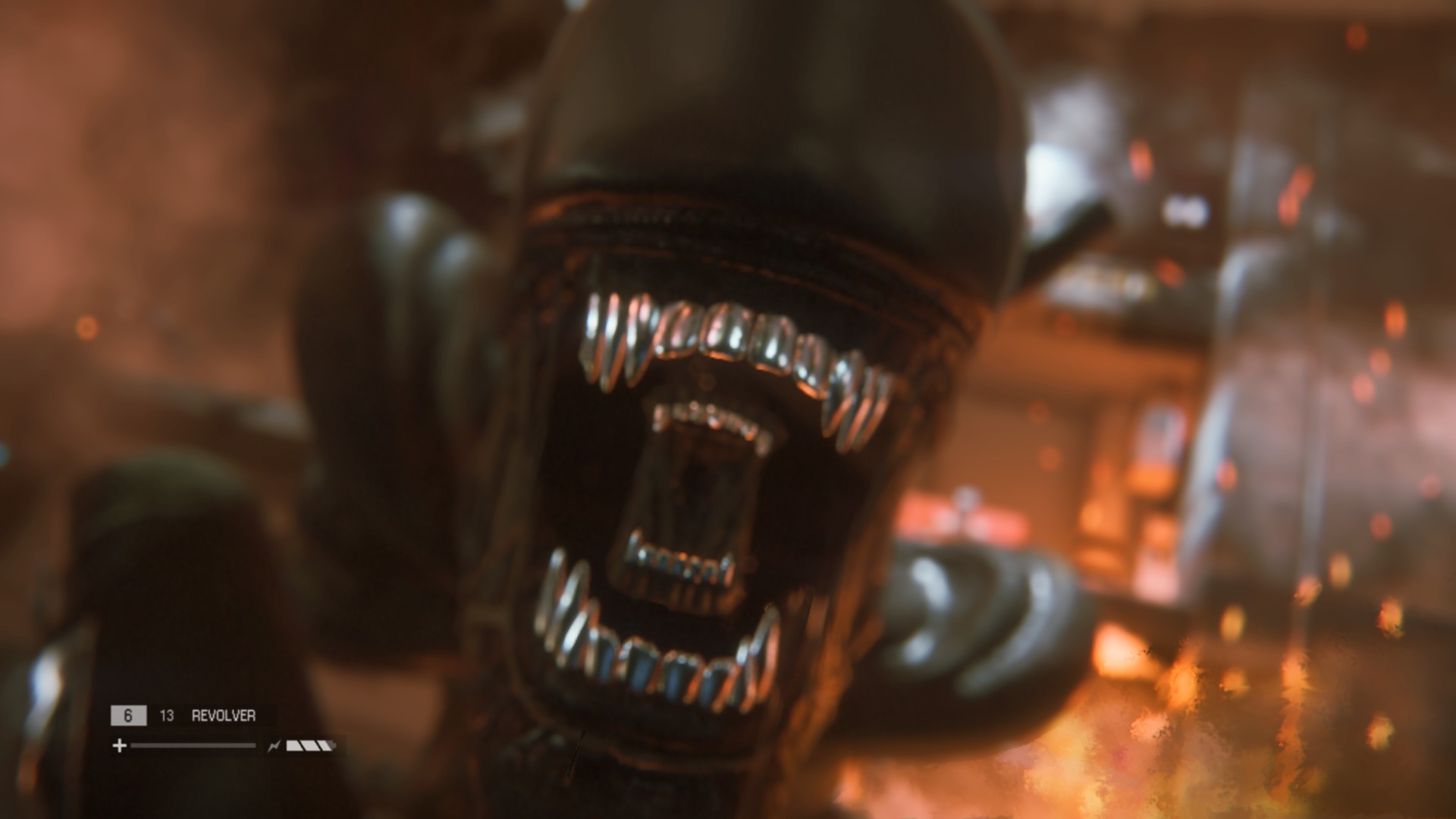
Something about this has never sat right with me. Six years later, here I am, still thinking about that statement, and it feels just as wrong to me as the time I first heard it. Something about this just doesn’t work for me. As I think about all the horror games that have actually scared me, every single one of them featured a degree of combat.
Before we get started, though, let’s talk about what horror means.
Many people describe horror as that feeling of creeping dread before they see something bad happen. That’s a very powerful emotion, and I totally get the appeal, but there’s just one problem: that’s not horror, that’s a different emotion entirely. That’s terror. Terror is the gradually growing worry that something isn’t right, that chill down your spine as uncertainty grips you. Terror is worrying that you’re about to confront a monster.
Horror is confronting the monster.
If terror is the tense build-up, horror is the payoff. “Horror,” as a genre, then, is a combination of terror and horror. It’s a genre made up of these two complementary emotions, themselves composites of emotions like anxiety and disgust. When someone says they want “true horror” but refers to the creeping dread, what they want is terror, but terror and horror are two halves of the same whole. You can’t have one without the other.
Many horror movie directors use these two emotions to powerful effect. Alien spends a long time building up the terror before Ripley’s horrific confrontation at the end. Halloween runs for over an hour before Michael Myers attacks. Good horror spends a lot of time setting up the actual horrific experience.
But Halloween and Alien both run less than two hours. What about games?
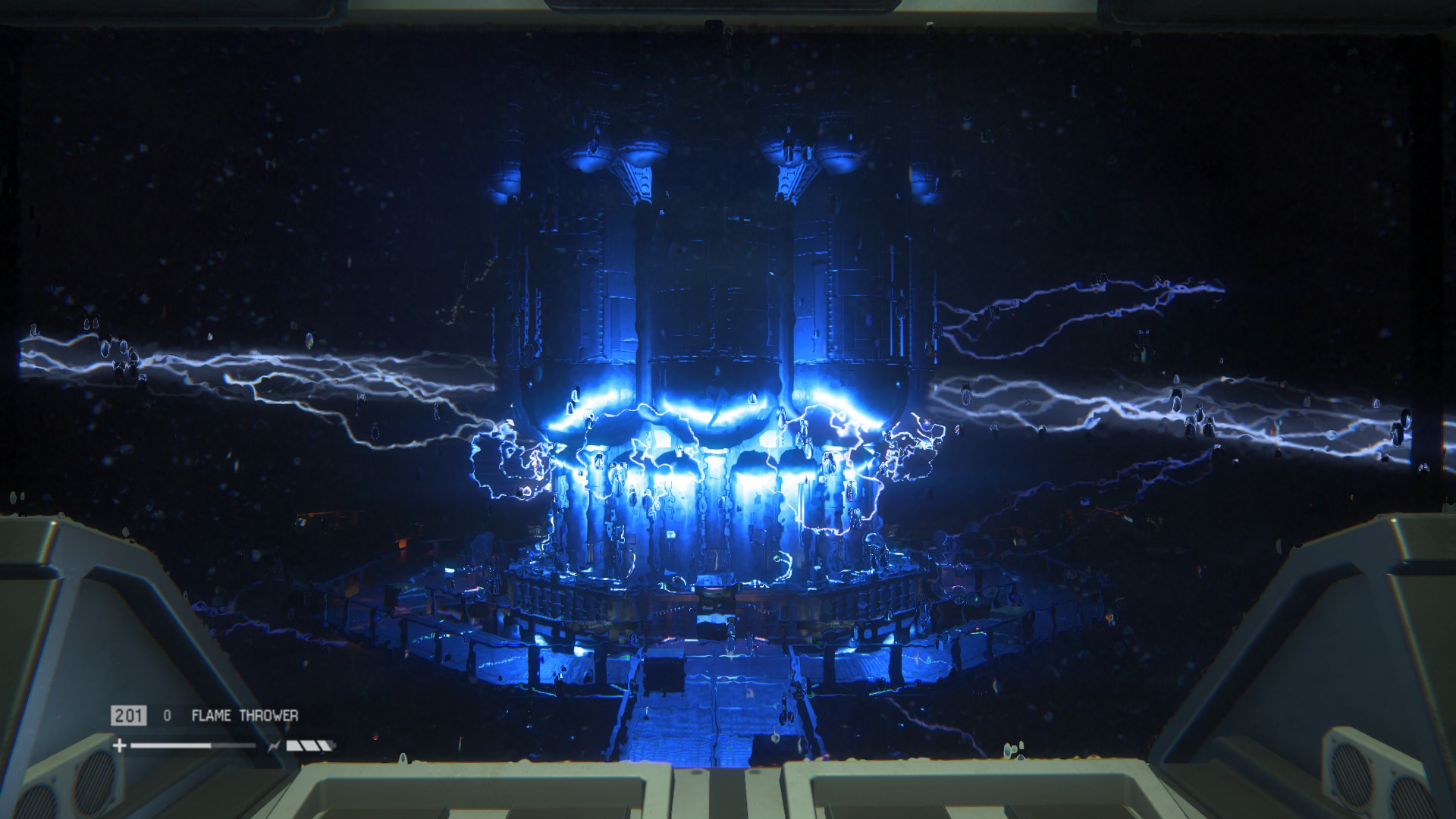
The expectation is that games will last more than two hours. The audience expects a sixty dollar purchase to last a great deal longer than a twelve dollar movie ticket, and games have historically lasted significantly longer than films. Not only that, but the key to a game’s success is variety — you can’t do the same thing over and over with no payoff. All setup, no joke.
To put it another way, one cannot simply scale up the length of things. A great movie can go for a nice 60/40 split, 55 minutes of terror amplified by 35 minutes of horror. That same 60/40 split won’t work for a 40 hour game. 24 hours of terror followed by 16 hours of horror just won’t work. It gets exhausting. The least frightening horror games try to be nothing but terror with just a few seconds of horror, if anything. The pacing has to change.
Some games, like Alan Wake, take the episodic approach; each level is its own self-contained narrative, with its own distinct beats. Other games, especially open world titles, run the gamut of emotion; STALKER: Shadow of Chernobyl has elements of horror, but it also features adrenaline-pumping action, melancholy, loneliness, disappointment, and so on.
For a video game to work, you need terror, then horror, then more terror, followed by more horror. The game becomes a roller coaster, with crests and troughs where appropriate. This keeps the game interesting without being exhausted; it keeps players interested while leaving them engaged. Scare players, sure, and then let them confront something horrifying, but tone it back down after that, give them room to breathe, let them start over.
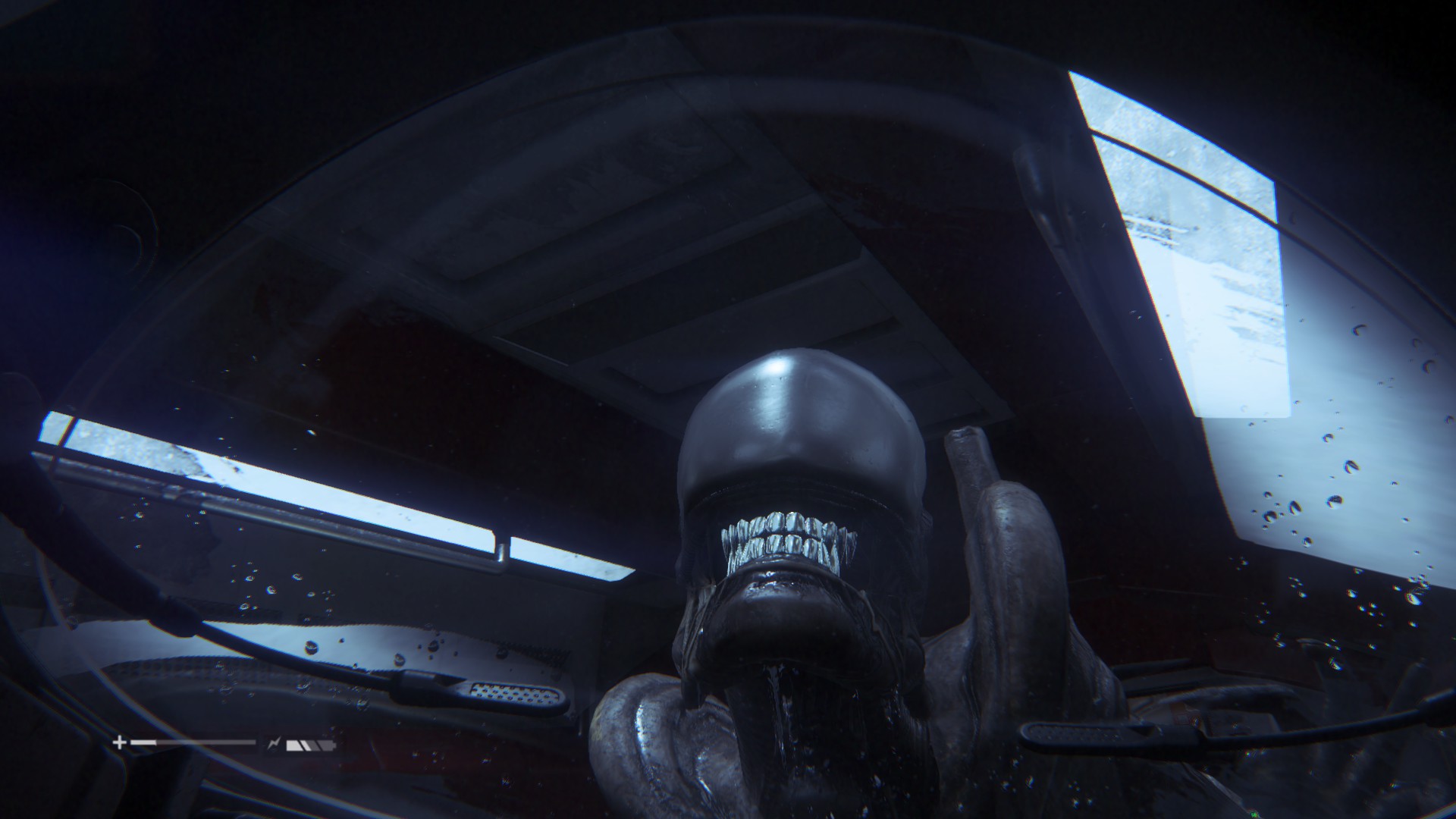
Make sure it’s different every time, too — Resident Evil 4‘s power comes from the variety of its encounter design. The emotional beats are similar, the roller coaster has its ups and down, but each up is a new up, and each down is a new down, and that’s why it works where so many other horror games fail.
Whether you have combat or not, based on every horror game I’ve played, length alone dictates that variety and phases of both terror and horror are required to create a complete package; you can’t simply stretch out the same emotion over a longer period of time.
This brings us to the first flaw in the “no-weapons” horror game argument’s armour. A great deal of these sorts of games try to hang on to that single emotion of terror too long — they want you to feel a state of constant, never-ending dread. The problem is that it’s exhausting; it’s why, I think, so many people want to laugh about it on YouTube. It’s hard to take that kind of fear at face value; it’s much easier to turn it into a comedy routine.
But even when weaponless horror games balance the ebb of terror and flow of horror flawlessly, they still lose my interest, and it’s because there’s no way to fight back.
Here’s the idea behind a weaponless horror game: vulnerability generates fear. If you can’t fight back, you’re more vulnerable, and therefore you are more scared. By reducing your options to simply run or hide, a horror game should be much scarier than one where you have a gun. It’s a catchy argument, and an easy one to take at face value, but there’s just one problem: it’s bogus.
The first mistaken assumption at play here is that fewer options make games scarier. The weaponless horror game strips the experience down. It’s all about terror and the only way of solving a problem is either run or hide.
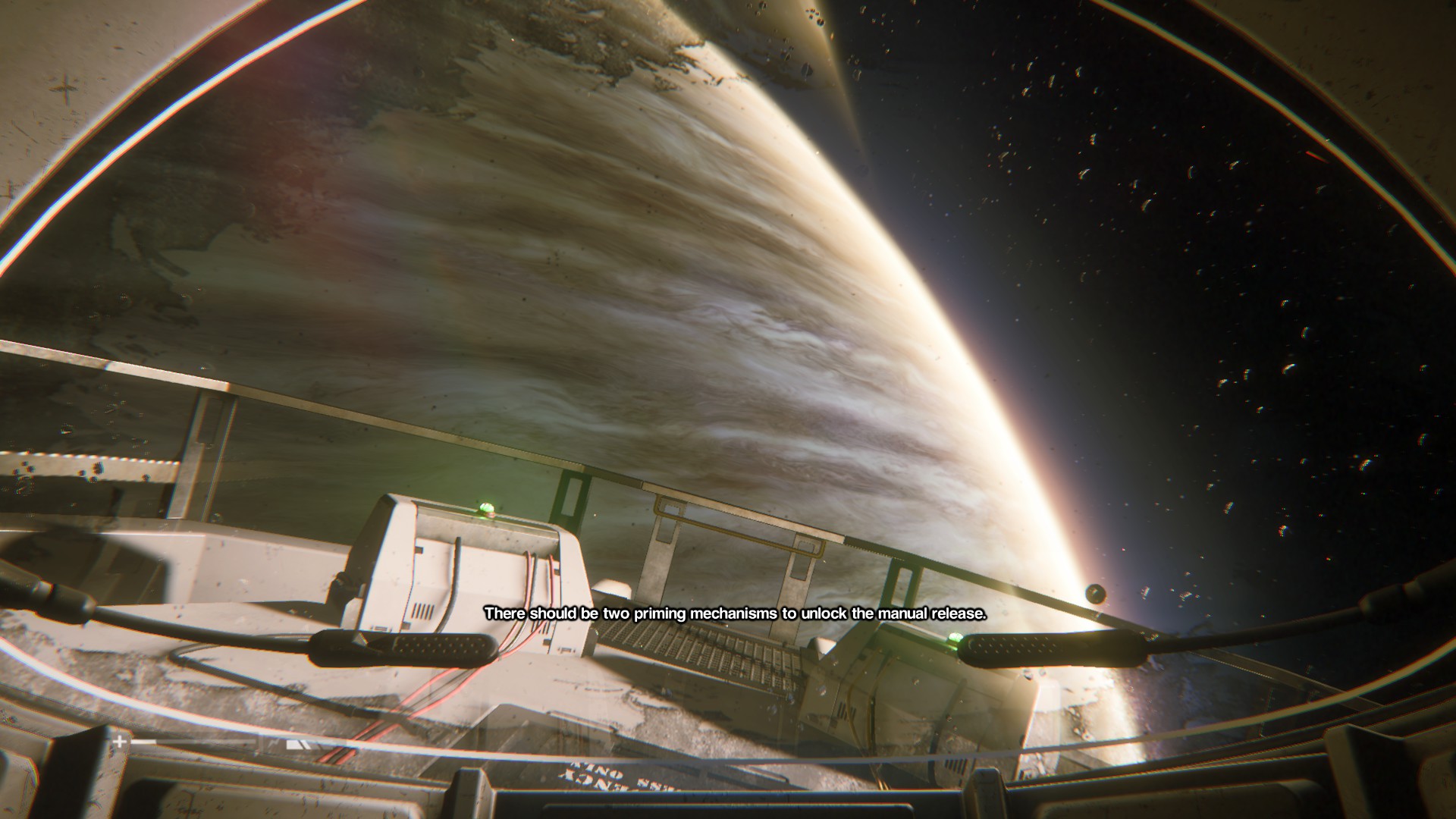
The problem with that assumption is this: the key to great horror is uncertainty. Horror, especially in games, works when it’s dynamic. Something happens, which leads to a new action, but then a complication arises. Instead of mere escalation, a good horror experience is a series of actions followed by consequences that change our understanding of the situation.
Until Dawn has a wonderful misdirect about a character which leads to a discovery that complicates our understanding of the game. We thought we had to deal with one thing one way, but now we have to deal with something else in a completely different way.
It still escalates, but not in a linear way. Until Dawn works because variety fuels interest.
The second, even more mistaken assumption of the “weapons aren’t scary” argument is that having a gun makes you feel safe. This couldn’t be further from the truth. Guns add variety to the game and capitalise on a key component of the adrenaline rush that fuels fear: the audience’s urge to fight.
Players with guns have to balance the desire between fight and flight. A weaponless horror game can only offer the player flight.
Not only that, but guns are not empowering. Sure, you could give the player a Frank West-sized arsenal and send him off to fight all the monsters you want, and it would be fun.
Even when the weapon is powerful, like the Smartgun in Aliens, it still serves the vital purpose of keeping the pacing interesting. One moment you’re scared, the next you feel relief as you start killing monsters. All too soon, the gun’s over, and you’re left with memories of that brief empowerment.
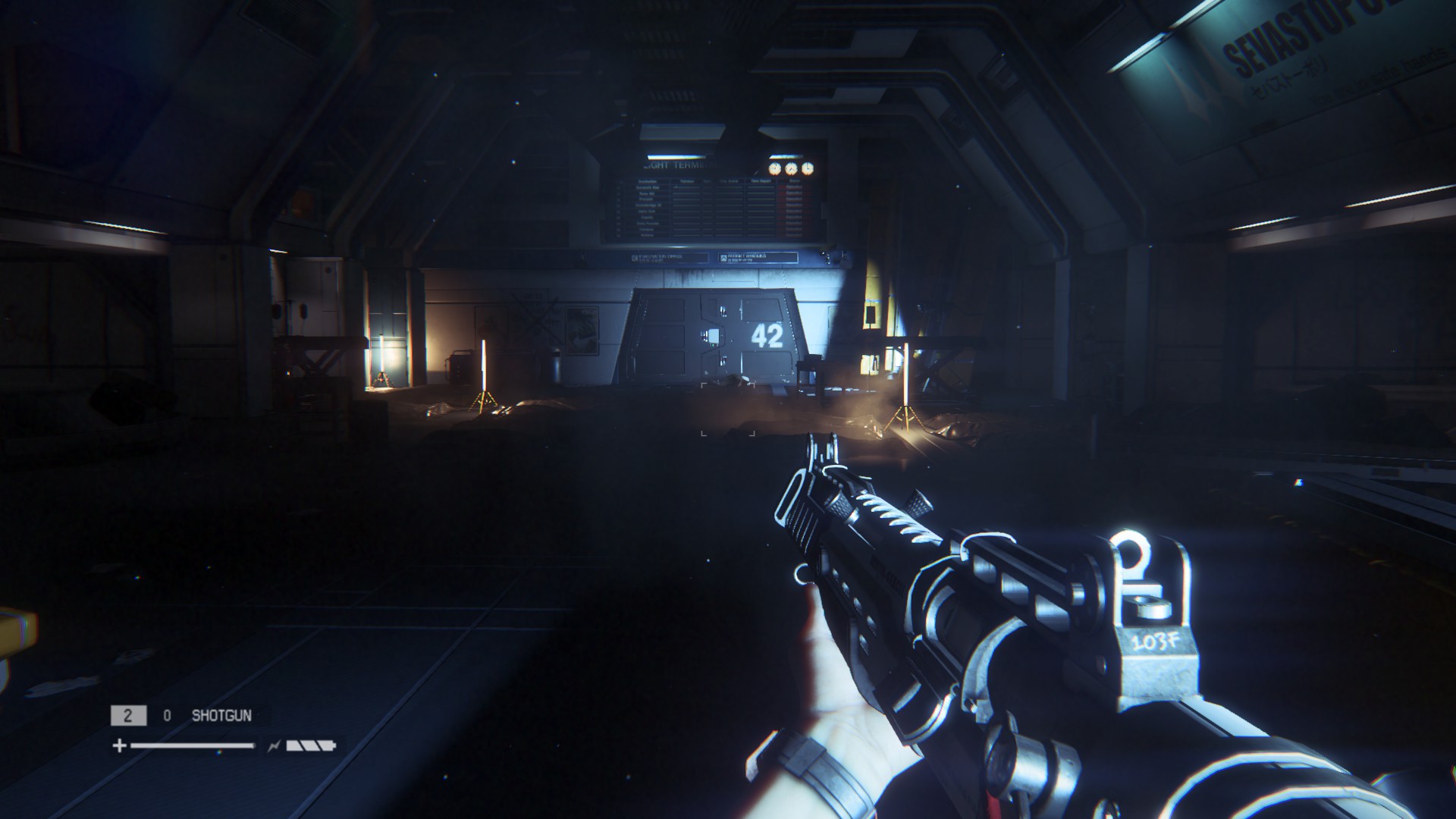
Pretty soon, you start to miss it. All you have now is a measly pistol. Fat lot of good that will do you. It’s ok to have moments without terror in a horror game. It’s ok to have moments of hope, because terror is that much stronger when your hope is snatched away. Moments of power accentuate moments of fear.
But weapons, especially guns, aren’t always means of power. There is no better foil in a horror game than a gun.
A well-designed weapon in a horror game complicates the decision-making process. It encourages you to come out of your hiding place, makes you question whether you should really flee. In a weaponless horror game, your options are clear. Having a gun makes you ask “can I take him?” followed by “but what happens if I can’t?” and “what if firing this gun alerts other monsters to my presence?” A well-designed weapon in a horror game isn’t an answer, it’s a host of questions. It’s a what-if generator.
A well-designed weapon in a horror game not only introduces uncertainty, it gets you into trouble. Consider the scariest moment in Alien: Dallas enters the Nostromo’s duct system to flush the Alien out, but the Alien takes him by surprise, and Dallas disappears. It’s a moment that only happened because the crew had flamethrowers and thought they could take the alien on.
It’s important to note that the crew was not emboldened by having the weapon; the flamethrower was not an implement of relief. It simply encouraged them to make a decision that cost them Dallas’ life.
Alien: Isolation, a direct game sequel to the film, starts off rough, but most people agree that it comes into its own after you get through the medical wing — or, put another way — most people seem to think the flamethrower makes or breaks the game, which makes perfect sense. Prior to the introduction of the flamethrower, any encounter with the alien is a simple case of run or hide, and the pesky Alien is programmed to always be somewhere nearby, so there’s no escaping for long.
The flamethrower grants you some breathing room, because it can cause the Alien to run away, if only for a moment. This enhances the emotional pacing of the game. Having a flamethrower also means you’re more likely to take risks, like Dallas did, which put you in far more vulnerable positions than you would be if you didn’t have a gun.
But then it does something else.
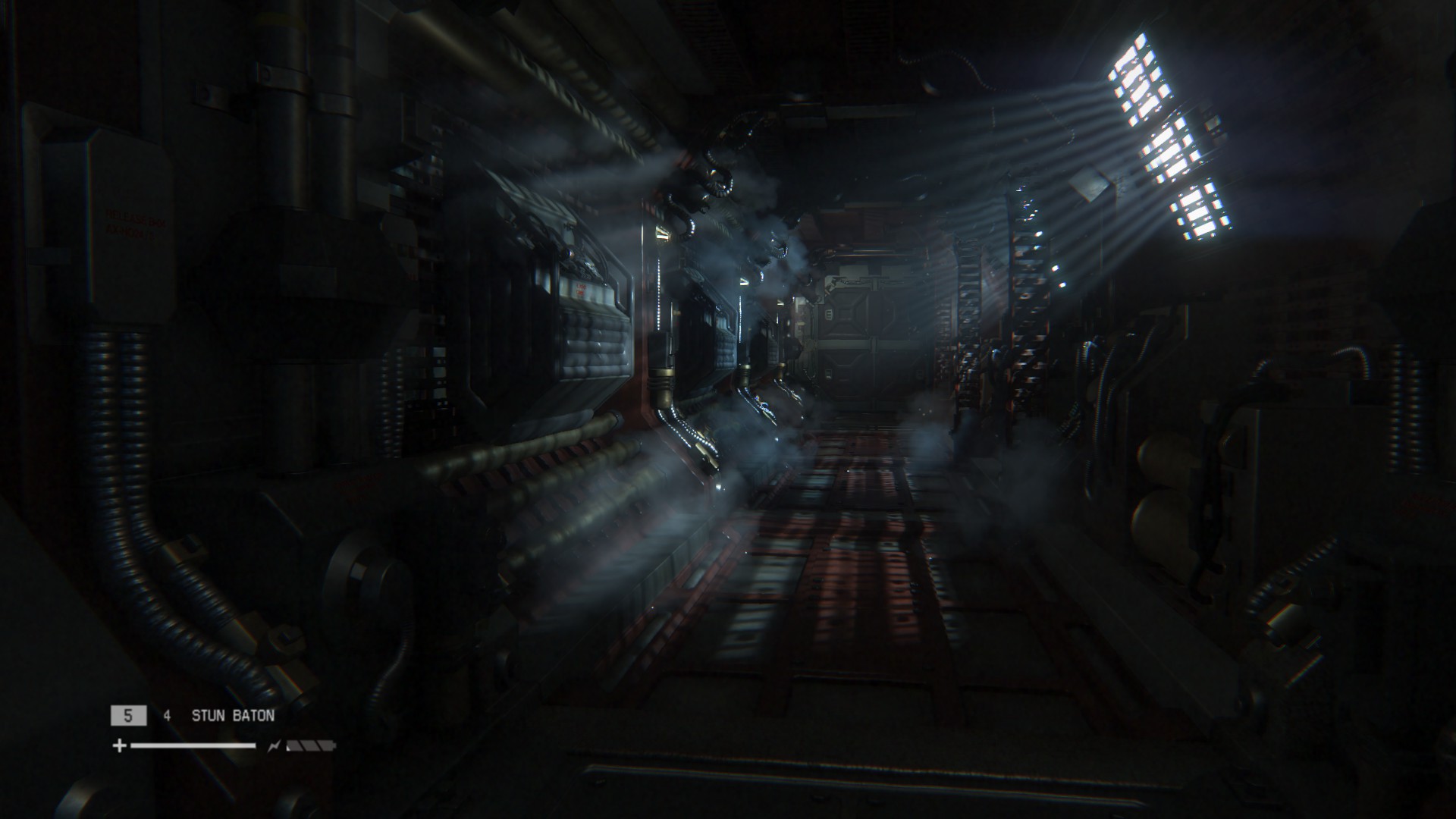
The early game is not particularly scary, because it’s a case of either hide or you die. Instead of fear for my first few hours, I felt amusement. Aww nuts, he caught me again. Ha ha.
Once I got the flamethrower, however, not only was I taking stupid risks, but I was constantly worrying about ammo. I was taking chances to get more, or I was panicking because I only had 100 ammo and I’d have felt a lot safer with 400.
It’s irrational, sure, that I felt more afraid with 100 flamethrower fuel than with 0, but having the gun meant worrying about inventory. Alien: Isolation was so much scarier when I had to keep an eye on my fuel gauge, when I had to worry about whether or not I could scare the alien off as my tank was running low. Stressing about my inventory made the game just that much scarier.
As if that weren’t enough, sometimes guns complicate situations because you can’t use them. One of my favourite moments in Aliens is when the crew descends into the alien nest but can’t use the guns they have. There’s this unique anxiety generated by knowing that the guns you have will only make things worse.
Call of Cthulhu: Dark Corners of the Earth is one of my favourite horror games because one of the levels gives you a gun, but you’re told not to use it, because you don’t have enough ammo to fight off everyone who arrives after hearing a gunshot. You have a gun, but now you’re terrified of accidentally pulling the trigger and calling down a horde of eldritch monsters on your head. The scariest thing in the level is the gun in your hand.
That’s what guns add to horror, but they have one other benefit.
In games, death means very little. It’s not really death, it’s a means of resetting a fail state.
Try, fail, die, try again.

Horror doesn’t work when you’re not in mortal jeopardy, and if you die frequently, then things aren’t so scary. Likewise, if a situation is predictable, then it loses any sense of risk.
I played a bit of SOMA on a friend’s account and found it boring because it was clear when the designers wanted me to be fearful as opposed to when they didn’t. The opening is creepy, sure, but it’s so blatantly artificial that a momentary startle is easily forgotten. You can stride with confidence through a level.
Having a weapon introduces a system of risk and reward. Instead of walking with confidence through an unconvincing haunted house, a weapon might help keep deaths at bay, reducing the frequency of death, and, as a result, preserving the intensity of the moment.
Losing resources like ammunition, which you wouldn’t have in a weaponless horror game, can make death sting that much more; early on in Alien: Isolation, death simply meant a do-over. Later, when the flamethrower meant it happened less, it mattered more, and the penalty was losing out on that brief bit of luck when you’d found that extra tank of fuel.
So yes, absolutely, weapons can make you confident, but that’s fine, because it makes horror that much better. Confidence leads to far more dramatic decisions. Weapons introduce uncertainty into your decision-making process, and then they complicate everything by giving you more things to worry about. They keep death from becoming rote; if anything, they give it weight. Weapons, especially guns, absolutely make horror games scarier.
I don’t expect you to agree with me, but I do hope I’ve given you some food for thought. Are there resources other than ammo that can be used? Do weaponless horror games really need to be so stale? How can a player be encouraged to make more interesting decisions than simply run and hide?
A weaponless horror game is often a simple one, a game where the only viable choice is to distance yourself from the act of play. Simply hiding in a corner, motionless, waiting for a monster to leave is not as dynamic as searching for ammo or trying to take out a bad guy so others won’t notice. There is no risk-taking. There is little uncertainty.
A weaponless horror game relies on jump scares and waiting for jump scares to happen. A weapon means you might approach a monster and suffer the consequences. You might shoot at the monster with your only bullet and miss. Weapons benefit horror because they add variety to the horror experience; they broaden the emotional pacing of the game.
Weapons aren’t necessary to a horror game, but they sure can help make it scarier.
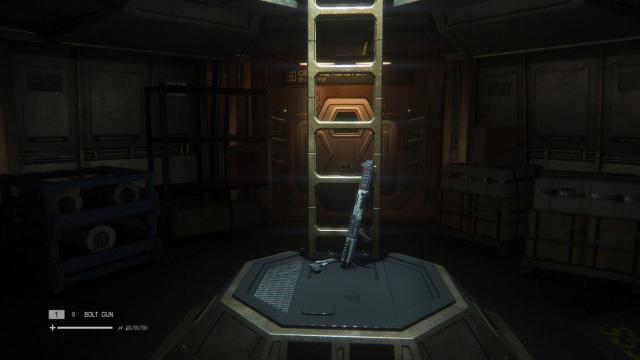
Comments
20 responses to “Why Horror Is Scarier With Weapons”
Personally I feel weapons shouldn’t even be a factor when considering what truly scary horror is, rather that they’re just one way of creating scary horror. It’s not just about monsters and flashlights either. Horror can also be about a loss of control in a situation, or an event with deep pscyhological impact.
Clock tower on PS1, still to this day the scariest muther of a game ive played, you had no way to fight back, and the controls were point and click so no direct control, it made the game truly terrifying.
Indeed, there’s plenty of horror adventure games that have no real means of fighting back in a conventional sense. Phantasmagoria, 7th Guest, The Dark Half.
Far too often when you throw weapons at the player it’s less horror and just plain action. I’d say Until Dawn is one of the best horror games I’ve played, but for the most part you aren’t armed and when you are its negligible except for one particular sequence. On the other hand you’ve got System Shock 2, which is just mindless killing since you’ve got such a wide array of weapons and no real chance of running out of ammunition or ways to kill the enemy.
But how is it just plain action? Isn’t there a noticeable difference with tone, gameplay structure and the intensity of the action in these fight-back horrors?
I dont really agree but i get what youre saying. Horror works based off a feeling of vulnerability. That can be achieved by guns, no guns, scarcity, pacing or just good ol jumpscare.
I didnt use the flamethrower in isolation much. The alien gets used to it. The feeling of vulnerability did make my palms sweat though.
Then there are games like Pathologic or Deadly Premonition that work purely from giving you a feeling of unease. There’s combat, but it sucks, and is kinda unnecessary.
I still think it’s necessary though, as the juxtaposition between the capabilities the player is implied to have, and the oppressive atmosphere is very much a part of it. It could be made better, but I’d always rather have the ability to fight in these games.
Brilliantly well put. I’ve been thinking this for a while. Amnesia, Slender, and Outlast were all pretty good, but I’ve been unimpressed with the knock-on effect of ‘no weapons = scary’ as the article mentions. It’s just so limiting; it tells me the developers couldn’t manage to implement more variety of responses for the player and keep it spooky/creepy/frightening.
Enemy and environment design play such a bigger role than they think – create situations where there’s ‘something’ to dread even when empowered with a rocket launcher. Alien: Isolation did this really well in my recent play: every enemy reacted to certain weapons differently and presented a different type of threat. Also, each weapon was given or removed at appropriate times.
I’m reminded of other action-horror titles that stood-out: The Suffering, Shadowman, Resident Evil 4, STALKER. And the Fatal Frame series – god damn, why does nobody mention these games? They’re terrifying and you can (and often must) fight every enemy in the game and the combat is perfect for horror: you literally need to put yourself in a scarier riskier position and face your horrors to succeed!
Nobody mentions these games because by their very nature they’re not mainstream (save for some rare exceptions) and therefore not going to get the most eyeballs/attention. Horror is a niche. Horror games a niche of a niche. You can only wax about them with people who’ve already made it through experience, really.
While I agree that it’s super niche. This is a site specifically speaking to gamers as an audience (not the casual crowd) while discussing through via an article the intricacies of a very niche genre, that is so specific as to have it’s own types of gameplay styles not overly present in most ‘not-horror’ games. These titles should be noticeable just by the researching the subject matter.
I wouldn’t say nobody mentions it since whenever there’s a list of the best horror games, Crimson Butterfly is inevitably on the list. I haven’t played 5 yet, but the first four are among my favourite horror games.
Yeah I’m not complaining. It just baffled me that we’ve managed to go through the whole roller-coaster ride of ‘combat in horror isn’t scary!’ to now the opposite with this article, when like before that even started there was already a variety of games that had done both styles well.
Scary hoplessness is with no weapons. Running, hiding and hoping to survive.
When youre given a weapon and forced to confront what scares you… thats horror.
AvP 1 and 2’s marine campaign is the perfect example. it doesnt matter that you’re loaded to brim with weapons and ammo.. when you go down into the hive you are scared shittless
I’m usually too busy rocking out to Lords of Acid to be scared of anything in AvP (gotta love games that play tracks from whatever CD is in the drive)
Maybe a better version of this idea might be something like perma-death in a game, but it can be changed to a respawn system once you collect enough of a certain pick up, say, i dunno, 5 skulls. Every respawn uses the entire 5 skulls, and you can’t hold more than 5 at a time, so you have to take risks and backtrack etc when you’re out of skulls or risk losing all your progress.
I definitely agree that weapons in horror games at their best are tools to generate more terror / horror, but most developers can’t seem to find that perfect balance needed for it to work.
Quality article, where’s the thumbs up button?
The way I see it, terror is mindless, instinctive, your body reacting to your brain screaming “RUN AWAY OR YOU’LL DIE!” Horror is the complex mix of emotions that overrides that terror – for whatever reason.
It doesn’t need to be by giving you a weapon, tho when done properly it can be an excellent catalyst – it can be anything that somehow breaks your mind away from the “run and hide” loop and gets you thinking about what you’re seeing. I’d not classify the emotions that Eddie Gluskin’s, ah, ‘wives’ evoked as anything other than ‘horror.’ Disgust, macabre curiosity, indecision, anticipatory terror… In my mind, horror isn’t one emotion, it’s the complex mix of emotions that overrides that part of your brain screaming at you to flee.
Completely disagree and I’m honestly disappointed that you would rather see more weapons in games. Combat is an overused and stale mechanic. I enjoy combat and it definitely has its place and uses but to criticise games that don’t use it seems narrow minded.
Horor is a unique genre in every medium because it invites new and unique high concepts to be explored. Limiting games to combat mechanics would mean no games like PT, Slenderman or Five Nights at Freddy’s.
I can understand you finding SOMA boring (maybe it shouldn’t have been so long, maybe horror games don’t need to run as long as other games) but for me that was one of the best horror games I’ve seen. It used the simple run and hide mechanic to deliver some genuinely terrifying moments and an extremely deep and thoughtful story (the ending is excellent if you get that far).
That’s so reductive though. Combat gameplay doesn’t just have to be ‘shot/hit thing, it now gone’. There’s so many ways about fighting in a game that can be made fresh and interesting.
Just in the horror genre here we have the classic style you’re thinking of – Doom, System Shock, Onimusha, The Suffering, Shadowman, Resident Evil 0 – 3. The latter being the originator of ‘survival’ where knowing that you’re limited via controls and inventory is a key aspect. STALKER is a survival game with nice scary bits and when played at the correct difficulty, it’s so tense as everything is dangerous. Fatal Frame forces you to grapple with scary ghosts in order to defeat them – looking what you fear in the face and acknowledging what is the most frightening thing about them helps you succeed. The Condemned series also forces combat into very close quarters. Aliens: Isolation presents an enemy that is programmed to be unpredictable and can never truly die, so your combat is just a means of controlling a difficult situation. That’s similar to some battles in Silent Hill 4 and Siren Bloodcurse. Resident Evil 4 goes full action (prompting its sequels to double down) however its magic is in shaking up the dynamic: foes attack from all angles, evolve into complex creatures and your goals change from protecting yourself into protecting Ashley. The fear series relied on making combat horrific by giving it to a smarter and better equipped force that could only be bested by entering a bullet-time like state where any major threat slowly creeps into vision.
Even the now popular ‘run-and-hide’ gameplay is effectively a ‘fighting’ mechanic. In order to beat these games with actual sense of undulating scares (not just an endless marathon with the scary monster in tow) then the player needs to retain composure, fight their own instincts and deconstruct the environment into safe and unsafe spaces. Here, defeating the opponent is to follow a particular strategy to wrestle their knowledge of you within their environment back in your own hands.
Excellent article.